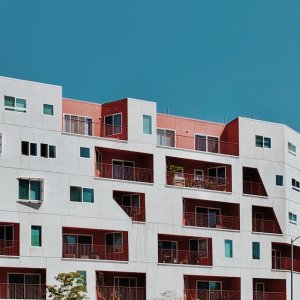
Reducing Housing Deficit in Latin America Through Public Assets
 By Antonio Gozain | Senior Journalist and Industry Analyst -
Mon, 01/02/2023 - 09:32
By Antonio Gozain | Senior Journalist and Industry Analyst -
Mon, 01/02/2023 - 09:32
One of Latin America’s biggest challenges is to provide affordable housing to people. While there are several paths to solve this problem, the Inter-American Development Bank (IDB) highlighted the use of public assets as the most effective strategy to reduce the housing deficit.
According to Art. 25 of the 1948 Universal Declaration of Human Rights, affordable housing demands citizens or families to live with security, peace and dignity. However, almost half of the population in Latin America and the Caribbean lacks access to affordable housing. Transforming public assets into social housing is an alternative to reduce the current housing deficit, according to an analysis by IDB authors Luis Schloeter and Sebastián Salas.
Public assets refer to real estate assets, such as land or buildings, that are publicly owned by municipal, regional or national governments. Likewise, the coordination of public-private investment programs for the development of social housing must play a more active role in alleviating the housing deficit in the region, according to the analysis.
Harnessing of public assets “is an opportunity to take advantage of available state or municipal land that is underutilized within cities. Many of these spaces have accessibility to goods and services, public infrastructure, connectivity and urban equipment, and can be a tool to solve the quantitative housing deficit estimated at more than 23 million homes,” reads the report.
Local authorities are among the key actors to promote public asset strategies. Regional governments can play a pivotal role in activating land because they own the real estate assets, control the land use and have the capability to promote affordable housing solutions through regulatory incentives and public-private partnerships to incentivize the construction of housing on public land.
Four Actions to Develop Social Housing in Public Real-Estate Assets
The use of public assets to address the housing deficit in Latin America can lead to inclusive, prosperous and sustainable development of neighborhoods and communities in the region, according to IDB’s analysis, which points at four main actions to successfully take advantage of the opportunity.
-
Governance mechanisms for housing development on public land: creation of an executive secretariat or state body in charge of supervising these projects
-
Implement regulatory instruments for the development of social housing, focused on the creation of integrated neighborhoods
-
Public or public-private plans to develop social housing projects on public lands
-
Development of a social housing projects and equipment adapted to the particular characteristics of the different localities, their geography and culture
While Latin American countries face similar challenges, from social issues and housing to economy apolitics, every country has different peculiarities and there is no one-size-fits-all solution for all. Mexico faces a housing deficit of 2.2 million units, according to the study ‘Confronting the Housing Challenge in Latin America’ by MIT, in collaboration with La Haus.
Mexico’s formal housing construction industry must grow by 30 percent to tackle the problem, said Alberto Saiz, Director of the MIT’s Urban Economics Lab: “Mexico is building the necessary houses, but a lot of construction is carried out under the informality; without an official permit, without adequate infrastructure, and, sometimes, without the minimum security parameters in the type of housing, materials, and services.












